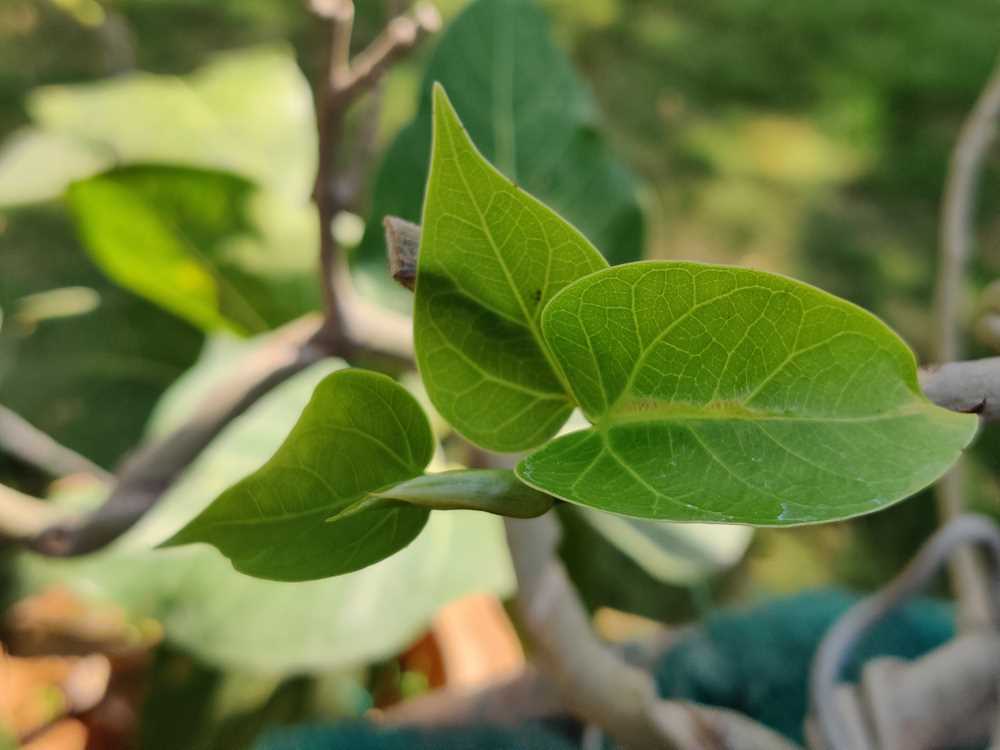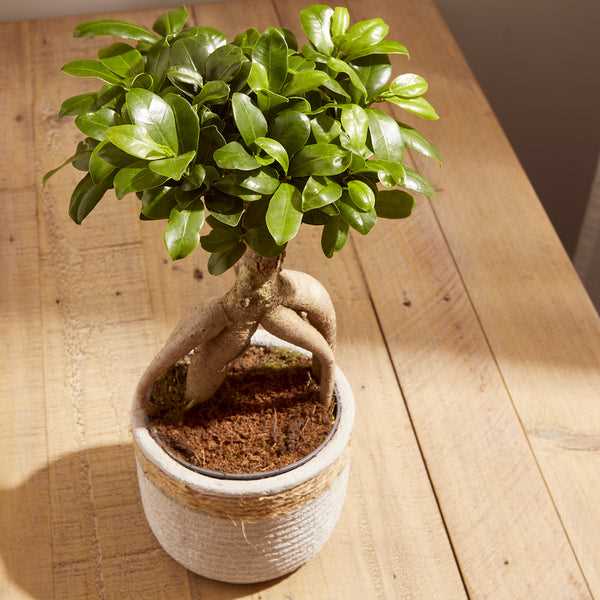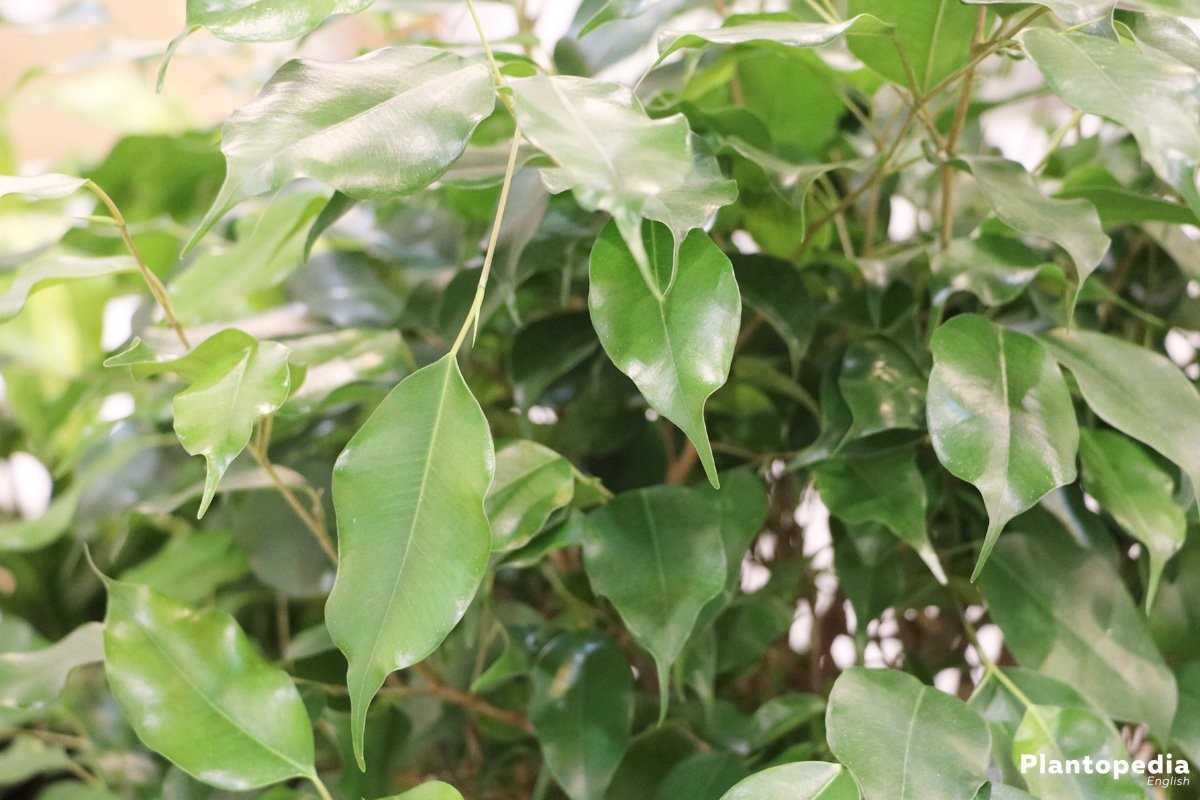- Understanding the Importance of Properly Forming a Ficus
- Promoting Healthy Growth
- Creating a Pleasing Aesthetic
- Maintaining Size and Proportions
- Benefits of Properly Forming a Ficus
- Choosing the Right Ficus for Forming
- Growth Habit
- Leaf Size and Shape
- Tolerance for Shaping
- Light and Temperature Requirements
- Identifying the Best Ficus Varieties for Forming
- 1. Ficus benjamina (Weeping Fig)
- 2. Ficus microcarpa (Chinese Banyan)
- 3. Ficus lyrata (Fiddle-Leaf Fig)
- 4. Ficus elastica (Rubber Tree)
- 5. Ficus retusa (Indian Laurel)
- Factors to Consider when Selecting a Ficus for Forming
- Preparing the Ficus for Forming
- 1. Choose a healthy ficus:
- 2. Assess the size and shape:
- 3. Gather your tools:
- 4. Timing:
- 5. Prepare the workspace:
- 6. Prune excess branches:
- 7. Repot if necessary:
- 8. Water properly:
- 9. Clear the foliage:
- Assessing the Health of the Ficus
- Visual Inspection
- Watering
- Pest Infestation
- Fertilization
- Pruning and Trimming the Ficus
- When to Prune
- Tools for Pruning
- Pruning Steps
- Trimming Techniques
- Techniques for Forming a Ficus
- 1. Pruning
- 2. Wiring
- 3. Defoliation
- 4. Regular Maintenance
- Basic Techniques for Forming a Ficus
- Q&A:
- What is the best time of year to prune a ficus?
- Can pruning a ficus help it to grow fuller?
- What tools do I need to prune a ficus?
- How much should I trim off my ficus when pruning?
- Should I prune the aerial roots of my ficus?
- Can I use the cuttings from pruning a ficus to propagate new plants?
- Video: #81 How to Propagate Fiddle-Leaf Fig from Cuttings? Ficus Lyrata Propagation | Indoor Plants

Forming a ficus tree can be a challenging task, but with the right techniques and expert tips, you can transform your ficus into a stunning masterpiece. In this article, we will discuss the importance of proper ficus formation and provide step-by-step instructions to help you achieve the desired shape for your tree.
Why is proper ficus formation important?
Properly forming your ficus tree is essential for several reasons. First, it enhances the overall aesthetics of the tree, making it more visually appealing. A well-formed ficus tree can become a beautiful centerpiece in any room or garden.
Second, proper formation helps maintain the health and longevity of the tree. By removing dead or diseased branches and shaping the growth pattern, you can promote better air circulation and sunlight exposure, preventing the tree from becoming overcrowded and reducing the risk of disease and pests.
Expert tips and techniques for ficus formation:
- Begin with a plan: Before you start pruning your ficus tree, it’s important to have a clear plan in mind. Decide on the desired shape and size and outline the areas that need to be pruned or trained.
- Use the right tools: To properly form your ficus tree, you will need a set of sharp pruning shears, a pair of pruning scissors, and a sturdy ladder or step stool to reach higher branches.
- Start with the basics: Begin by removing any dead or damaged branches, as well as any crossing or rubbing branches. This will improve the overall health of the tree and create a cleaner structure.
- Shape the branches: Use the pruning shears to shape the remaining branches as desired. Trim them back to an outward-facing bud or branch, which will encourage new growth in the desired direction.
- Support growth with training: If you want to train your ficus tree to grow in a specific shape or direction, use wire or flexible ties to gently guide the branches. Be careful not to constrict or damage the branches.
- Maintain regular pruning: To keep your ficus tree looking its best, be sure to prune it regularly. This will help maintain the desired shape, promote new growth, and prevent the tree from becoming overgrown or unruly.
By following these expert tips and techniques, you can properly form your ficus tree and create a stunning centerpiece for your home or garden. Remember to be patient and take your time, as ficus trees can take time to respond to pruning and training. With dedication and care, you can transform your ficus tree into a work of art.
Understanding the Importance of Properly Forming a Ficus
Properly forming a ficus tree is an essential aspect of its care and maintenance. The shape and structure of the tree play a crucial role in both its aesthetic appeal and overall health. By understanding the importance of proper formation techniques, you can ensure that your ficus thrives and remains visually appealing for years to come.
Promoting Healthy Growth


One of the primary reasons for properly forming a ficus is to promote healthy growth. Pruning and shaping the tree allows for better air circulation and light penetration throughout the entire plant. This can help prevent the development of diseases and ensure that every part of the plant receives adequate sunlight, which is crucial for photosynthesis.
When a ficus is properly formed, it also encourages the growth of new branches and leaves. Regular pruning stimulates the production of auxins – hormones that promote lateral bud development. By targeting specific areas of the tree, you can control its growth and shape, creating a balanced and visually appealing specimen.
Creating a Pleasing Aesthetic
A properly formed ficus enhances the aesthetic appeal of any indoor or outdoor space. Whether you have a bonsai ficus or a larger tree, shaping it correctly allows you to create a visually pleasing focal point. Through strategic pruning and training, you can sculpt the tree to fit the desired style, whether it is formal, informal, or cascading.
Moreover, the shape of a ficus tree can also complement the overall design of your space. A well-formed tree can add height, texture, and structure to a room or garden and serve as a stunning centerpiece. Additionally, a properly formed ficus can be an excellent addition to themed gardens, such as Japanese or tropical-inspired landscapes.
Maintaining Size and Proportions
Proper formation is crucial to maintaining the size and proportions of a ficus tree. If left uncontrolled, ficus trees can become excessively tall, wide, or dense. By regularly pruning and shaping the tree, you can control its height, spread, and density, ensuring that it fits well within its surroundings.
This is particularly important for indoor ficus trees, as they may outgrow their allotted space and become difficult to manage. With proper formation techniques, you can create a compact and well-maintained tree that does not overwhelm its environment.
| Benefits | Description |
|---|---|
| Promotes healthy growth | Improves air circulation and light penetration, stimulates new branch development |
| Enhances aesthetic appeal | Allows for sculpting and fitting the desired style, adds height and structure |
| Maintains size and proportions | Controls height, spread, and density, prevents overcrowding indoor spaces |
In conclusion, understanding the importance of properly forming a ficus is vital for its overall health and visual appeal. By promoting healthy growth, creating a pleasing aesthetic, and maintaining size and proportions, you can enjoy a thriving and stunning ficus tree that complements your indoor or outdoor space.
Benefits of Properly Forming a Ficus
- Enhanced Aesthetic Appeal: Properly forming a ficus can make it visually appealing and aesthetically pleasing. By shaping the plant, you can create different styles and looks, adding beauty to your indoor or outdoor space.
- Promotes Healthier Growth: Trimming and pruning a ficus helps stimulate new growth and improves the overall health of the plant. By removing dead or diseased branches, you allow more nutrients to be distributed to the healthy parts of the plant, promoting better growth and vitality.
- Controlled Size and Shape: Forming a ficus allows you to control its size and shape, preventing it from becoming too large or overgrown. This is especially important for indoor ficus plants, as they can easily outgrow their designated spaces if not properly maintained.
- Improved Air Circulation: Properly forming a ficus plant promotes better air circulation through the branches and foliage. This can help reduce the risk of fungal diseases and pest infestations, as well as improve the overall health of the plant by preventing stagnant air pockets.
- Easier Maintenance: A well-formed ficus is generally easier to maintain and care for. Regular pruning and shaping simplifies future maintenance tasks, such as watering, fertilizing, and inspecting for pests or diseases. It also makes it easier to clean the plant and remove any debris or fallen leaves.
By taking the time to properly form your ficus, you can enjoy its numerous benefits and ensure its long-term health and beauty.
Choosing the Right Ficus for Forming
Properly forming a ficus starts with selecting the right variety for your needs. There are several ficus species to choose from, each with its own unique characteristics and growth habits. Here are some factors to consider when choosing a ficus for forming:
Growth Habit
- Tree-like Ficus: Certain ficus species, such as Ficus benjamina or Ficus microcarpa, can grow into impressive tree-like forms with a well-defined trunk and spreading canopy. These varieties are excellent choices for creating bonsai or focus trees.
- Bushy Ficus: Other ficus species, like Ficus pumila or Ficus elastica, have a more bushy growth habit. These varieties are great for creating fuller, compact shapes or using in indoor plant arrangements.
Leaf Size and Shape
If you have a specific leaf size or shape in mind for your formed ficus, consider the following:
- Large Leaves: Ficus lyrata or Ficus macropylla are known for their large, distinctive leaves. These varieties can create a bold impact and help emphasize certain forms.
- Small Leaves: Ficus retusa or Ficus salicifolia have smaller, more delicate leaves. These varieties are ideal for shaping intricate designs or creating miniature forms.
- Variegated Leaves: Ficus elastica variegata or Ficus benjamina variegata have variegated foliage, adding an extra layer of interest to your formed ficus.
Tolerance for Shaping
Consider how easily a ficus variety can handle shaping and pruning:
- Flexible Varieties: Ficus benjamina and Ficus microcarpa are relatively flexible and respond well to bonsai techniques like wiring and pruning.
- Less Flexible Varieties: Ficus lyrata or Ficus elastica have thicker and less flexible branches, making them less suitable for advanced shaping techniques.
Light and Temperature Requirements
Lastly, ensure that the ficus variety you choose matches your lighting and temperature conditions. Some ficus species prefer bright indirect light, while others can tolerate lower light levels. Temperature preferences can also vary among ficus varieties, so be sure to accommodate their needs.
By taking these factors into consideration, you can select the right ficus variety for forming and increase your chances of success in shaping and training your ficus into the desired form.
Identifying the Best Ficus Varieties for Forming
When it comes to properly forming a ficus tree, choosing the right variety is crucial. Some ficus varieties are more suitable for shaping and training than others. Here are some of the best ficus varieties for forming:
1. Ficus benjamina (Weeping Fig)
Ficus benjamina is a popular choice for shaping and forming due to its flexible branches and small leaves. It responds well to pruning and can be trained into various forms, such as bonsai or topiary.
2. Ficus microcarpa (Chinese Banyan)
Ficus microcarpa is another excellent choice for forming due to its adaptability and resilience. It can handle frequent pruning and shaping without losing its vigor. This variety is often used for creating bonsai trees.
3. Ficus lyrata (Fiddle-Leaf Fig)
Ficus lyrata is known for its large, fiddle-shaped leaves and striking appearance. Although it can be more challenging to shape compared to other varieties, it can still be trained with proper pruning techniques. Its unique foliage makes it a popular choice for interior decoration.
4. Ficus elastica (Rubber Tree)
Ficus elastica is a sturdy and versatile species that responds well to shaping and training. Its thick, leathery leaves and strong branches make it an excellent choice for forming into various shapes and styles. This variety is often used in indoor gardening due to its tolerance for low-light conditions.
5. Ficus retusa (Indian Laurel)
Ficus retusa is a species that is frequently used for bonsai cultivation. Its small, oval-shaped leaves and compact growth habit make it ideal for shaping and training. With proper care and pruning, it can develop intricate and appealing forms.
When selecting a ficus variety for forming, it is essential to consider factors such as the shape and size of the leaves, branch flexibility, and adaptability to pruning. By choosing the right ficus variety, you can ensure that your forming efforts will be successful.
Factors to Consider when Selecting a Ficus for Forming
- Species: There are many different species of ficus trees, each with its own unique growth habit and characteristics. It’s important to choose a species that is well-suited for forming, such as Ficus microcarpa or Ficus benjamina.
- Size: Consider the size of the ficus tree when selecting one for forming. Smaller trees are generally easier to manipulate and shape, while larger trees may require more time and effort to train into the desired form.
- Health: Ensure that the ficus tree you choose is healthy and free from any diseases or pests. Trees that are already weakened or stressed may have a harder time withstanding the forming process.
- Flexibility: Look for a ficus tree that has flexible branches and stems that can be easily bent and shaped without breaking. Rigidity in the branches may make it more difficult to achieve the desired form.
- Branch structure: Examine the branch structure of the ficus tree to determine if it has enough branches and foliage to create the desired form. Trees with sparse foliage may require more time and maintenance to achieve the desired look.
- Growth rate: Consider the growth rate of the ficus tree when forming. Some species may have faster growth rates, requiring more frequent pruning and shaping to maintain the desired form.
- Light requirements: Different ficus species have different light requirements. Make sure to select a tree that can thrive in the available light conditions in your space.
- Root system: Check the root system of the ficus tree to ensure it is healthy and well-developed. A strong root system will support the tree’s growth and help it withstand the forming process.
By considering these factors, you can select the right ficus tree for forming and set yourself up for success in creating a beautifully shaped and trained tree.
Preparing the Ficus for Forming
Before you start forming your ficus, it’s important to prepare the plant properly. Here are some steps to follow:
1. Choose a healthy ficus:
Select a ficus that is in good health. Look for a plant with vibrant green leaves and a strong root system.
2. Assess the size and shape:
Take a close look at the ficus and determine the desired size and shape you wish to achieve. This will help you plan your forming techniques accordingly.
3. Gather your tools:


Make sure you have all the necessary tools ready before you begin, such as pruning shears, wire cutters, wires, and bonsai soil.
4. Timing:
Choose the right time to form your ficus. It’s best to do it during the spring when the plant is growing actively.
5. Prepare the workspace:
Find a well-lit and clean area to work on your ficus. It should be a space where you can easily move around and have access to all sides of the plant.
6. Prune excess branches:
Remove any weak or excessive branches that may hinder the forming process. Pruning will help redirect the plant’s energy to desired areas.
7. Repot if necessary:


If your ficus has outgrown its current pot, it’s a good idea to repot it into a slightly larger container. This will provide better stability and allow for further growth.
8. Water properly:
Ensure the ficus is properly watered before you start forming. A well-hydrated plant will be more pliable and less prone to stress during the process.
9. Clear the foliage:
Remove any unnecessary foliage that may obstruct your view of the plant’s structure. This will allow you to better visualize and execute your forming technique.
By following these steps, you’ll set yourself up for success and ensure that your ficus is ready for the forming process.
Assessing the Health of the Ficus
To properly care for your ficus and ensure it thrives, it is important to regularly assess its health. By monitoring the condition of your plant, you can identify and address any potential issues early on. Here are some key factors to consider when assessing the health of your ficus:
Visual Inspection


- Leaves: Examine the leaves for any discoloration, spots, or damage. Healthy leaves should be vibrant and green. Yellowing or browning leaves may indicate a nutrient deficiency or over-watering.
- Growth: Observe the overall growth of the ficus. A healthy plant should show steady growth, with new leaves and branches emerging regularly. Stunted growth or wilting may signal poor health.
- Stems and Branches: Check the stems and branches for any signs of rot, cracking, or breakage. Healthy ficus plants should have sturdy and unblemished stems and branches.
Watering
Proper watering is crucial for the health of your ficus. Both underwatering and overwatering can harm the plant. Consider the following:
- Moisture Levels: Insert your finger into the soil about an inch deep to check the moisture level. If the soil feels dry, it’s time to water. If it feels moist or wet, hold off on watering.
- Drainage: Ensure that the pot has proper drainage to prevent water from accumulating at the bottom. Excessive moisture can lead to root rot and other fungal diseases.
- Consistency: Establish a consistent watering schedule for your ficus, taking into account its specific needs and the surrounding environment. Avoid drastic fluctuations in watering frequency.
Pest Infestation
Ficus plants are susceptible to various pests. Regularly check for any signs of infestation, such as:
- Insects: Look for any visible insects, such as aphids, mealybugs, or spider mites, on the leaves, stems, or soil surface. These pests can cause damage and reduce plant health.
- Webbing or Residue: Inspect the plant for any webbing or sticky residue, which may indicate the presence of pests. Spider mites and scale insects are known to leave webs or sticky substances on plants.
- Wilting or Yellowing Leaves: Pests can sap the nutrients from the ficus, causing leaves to wilt or turn yellow. If you notice these symptoms, examine the plant more closely for signs of infestation.
Fertilization
Applying the right type and amount of fertilizer can enhance the health of your ficus. Consider the following:
- Nutrient Deficiencies: Look for signs of nutrient deficiencies, such as pale leaves or slowed growth. Depending on the specific deficiencies, choose a fertilizer with the appropriate balance of nutrients.
- Fertilizer Schedule: Follow a regular fertilization schedule, typically every 4-6 weeks during the growing season (spring and summer). Adjust the frequency and dosage based on the specific needs of your ficus.
- Application Method: Apply the fertilizer evenly and avoid overfertilization, as this can damage the roots and lead to nutrient burn.
By regularly assessing the health of your ficus and addressing any issues promptly, you can help ensure its long-term well-being and enjoyment in your home.
Pruning and Trimming the Ficus
Pruning is an essential aspect of caring for a ficus plant. Regular pruning helps to maintain the plant’s shape, promote healthy growth, and remove any dead or diseased branches. Trimming, on the other hand, involves shaping the plant and controlling its size.
When to Prune
Pruning the ficus should be done during its active growing season, which is typically in spring or early summer. Avoid pruning during the winter months when the plant is dormant, as this can hinder its growth and lead to stress.
Tools for Pruning
To properly prune a ficus, you will need the following tools:
- Pruning shears: Used for cutting branches up to 1 inch thick.
- Loppers: Ideal for cutting branches larger than 1 inch in diameter.
- Hand saw: Necessary for removing thick branches.
- Gloves: Provide protection and prevent injury while pruning.
Pruning Steps
- Start by examining the ficus plant and identifying any dead, damaged, or diseased branches. These should be removed first.
- Next, look for branches that are crossing or rubbing against each other. These can also be removed to prevent further damage.
- Trim back any branches that have grown too long and are disrupting the plant’s shape.
- Make clean cuts at a slight angle just above a leaf node or bud. This will encourage new growth at the cut site.
- Remove any suckers or shoots that are growing from the base of the plant.
- Step back and assess the plant’s shape throughout the pruning process, making adjustments as needed.
Trimming Techniques
Trimming is done to control the size and shape of the ficus plant. There are several techniques you can use:
- Pinching: Use your fingers to pinch off the growing tips of branches. This will encourage branching and create a bushier plant.
- Heading back: Cut back branches to a desired length to maintain the plant’s shape and size.
- Thinning: Remove entire branches or stems from the plant to open up the foliage and improve air circulation.
- Root pruning: Trim the roots of the ficus when repotting to control its size and prevent it from becoming root-bound.
Remember to regularly check your ficus plant for any new growth that may require pruning or trimming. With proper care and attention, your ficus will stay healthy and beautiful for years to come.
Techniques for Forming a Ficus
1. Pruning
Pruning is an essential technique for shaping a ficus tree. It helps maintain its size, shape, and overall health. Here are some key points to keep in mind when pruning a ficus:
- Use clean and sharp pruning shears to avoid damaging the tree.
- Start by removing dead or diseased branches to promote new growth.
- Trim back the longest branches to create a balanced shape.
- Consider the overall design you wish to achieve and prune accordingly.
2. Wiring


Wiring is another common technique used to shape a ficus tree. It allows you to position branches and foliage in desired positions and create unique forms. Here are some tips for wiring a ficus:
- Choose high-quality training wire that is flexible but sturdy enough to support the branches.
- Start by wrapping the wire around the trunk or main branches.
- Gently bend the wire to position the branches as desired.
- Leave the wire in place for a few months to allow the tree to set in the new shape.
- Remove the wire carefully to avoid damaging the tree.
3. Defoliation
Defoliation is a technique used to stimulate new growth and reduce the overall size of a ficus tree. It involves removing a significant portion or all of the tree’s leaves. Here’s how to defoliate a ficus:
- Choose a time when the tree is actively growing to perform defoliation.
- Using clean scissors or shears, carefully remove the leaves from the tree.
- Monitor the tree closely and provide appropriate care, such as sufficient water and sunlight, to support new leaf growth.
- New leaves will start to appear within a few weeks.
4. Regular Maintenance
Regular maintenance is crucial for keeping a ficus tree in the desired shape. Here are some maintenance tips:
- Monitor the tree’s growth and prune as necessary to maintain the desired shape.
- Keep an eye out for pests and diseases and take prompt action to address any issues.
- Provide proper watering, fertilization, and sunlight to support healthy growth.
- Repot the tree as needed to ensure sufficient space for the root system.
These techniques, when applied with care and patience, can help you create a well-formed and visually appealing ficus tree. Remember to take your time and experiment with different shaping techniques to achieve the desired result.
Basic Techniques for Forming a Ficus
Properly forming a ficus is crucial for maintaining its health and shape. With the right techniques, you can create a beautiful and well-maintained ficus tree. Here are some basic techniques that will help you form your ficus:
- Pruning: Regular pruning is essential for shaping your ficus. Use clean and sharp pruning shears to remove any dead or unhealthy branches. You can also prune to control the size and shape of your ficus. Aim to prune in the spring or early summer when the plant is actively growing.
- Wiring: Wiring is a common technique used in bonsai-style ficus formations. It involves gently wrapping aluminum or copper wire around the branches to encourage them to grow in a specific direction. Be careful not to wrap the wire too tightly to avoid damaging the branches.
- Pinching: Pinching is another method that can help shape your ficus. By pinching the tips of the branches with your fingers or pruning shears, you can encourage bushier growth and prevent your ficus from becoming leggy.
- Staking: If you have a young ficus with weak or drooping branches, staking can help provide support and encourage upward growth. Use a bamboo stake or a similar sturdy object to gently tie the branches in an upright position.
Remember to be patient and take your time when forming a ficus. It may take some trial and error to achieve the desired shape, but with consistent care and attention, your ficus will flourish and become a stunning centerpiece in your home or garden.
Q&A:
What is the best time of year to prune a ficus?
The best time to prune a ficus is during the spring or early summer when it is actively growing.
Can pruning a ficus help it to grow fuller?
Yes, pruning a ficus can help it to grow fuller. By removing overgrown or crowded branches, you allow more light and air to reach the inner parts of the plant, stimulating new growth.
What tools do I need to prune a ficus?
To properly prune a ficus, you will need a pair of clean, sharp pruning shears and possibly a pair of loppers for larger branches.
How much should I trim off my ficus when pruning?
The amount of foliage you should remove when pruning a ficus depends on the size and health of the plant. In general, it is best to remove no more than one-third of the foliage at a time to avoid causing stress to the plant.
Should I prune the aerial roots of my ficus?
It is generally not recommended to prune the aerial roots of a ficus unless they are causing an obstruction or damage. Aerial roots are a natural part of the plant and help with stability and nutrient absorption.
Can I use the cuttings from pruning a ficus to propagate new plants?
Yes, you can use the cuttings from pruning a ficus to propagate new plants. Simply remove a healthy, leafy stem cutting and place it in a pot with moist soil. Keep the cutting in a warm, humid area and it should develop roots within a few weeks.
Video:
#81 How to Propagate Fiddle-Leaf Fig from Cuttings? Ficus Lyrata Propagation | Indoor Plants







